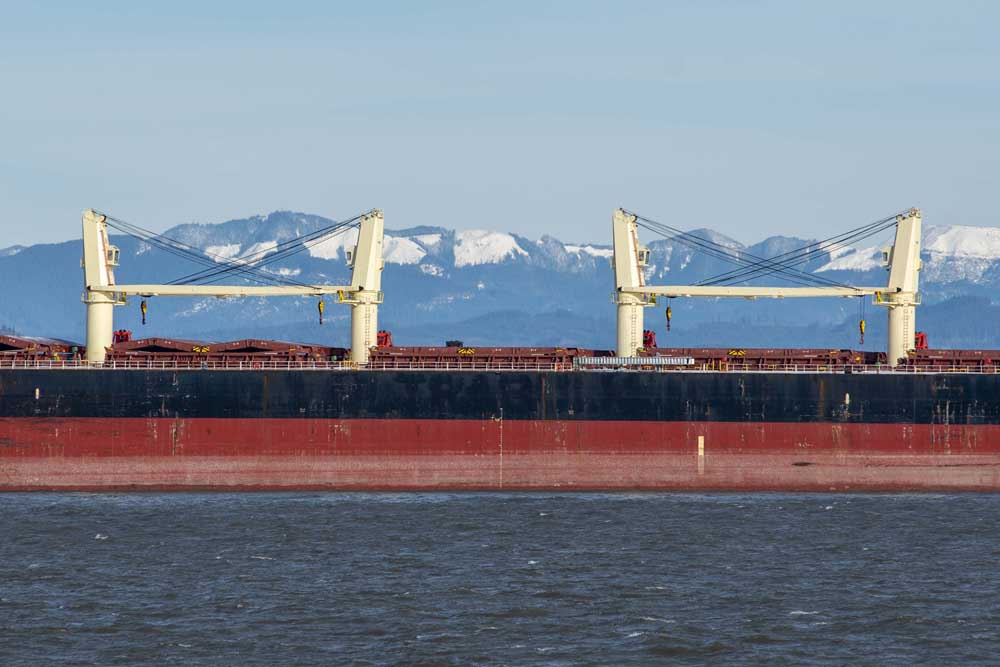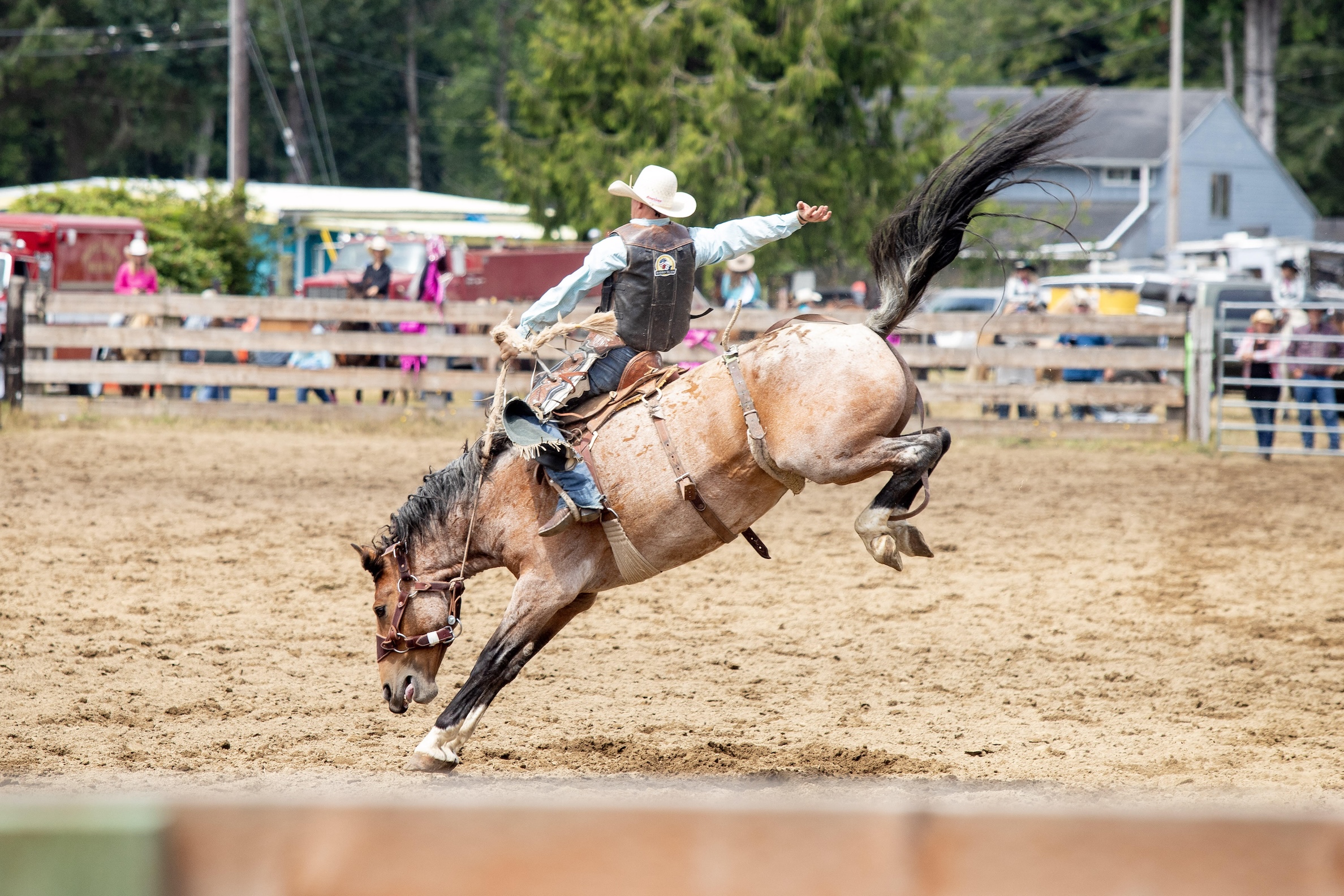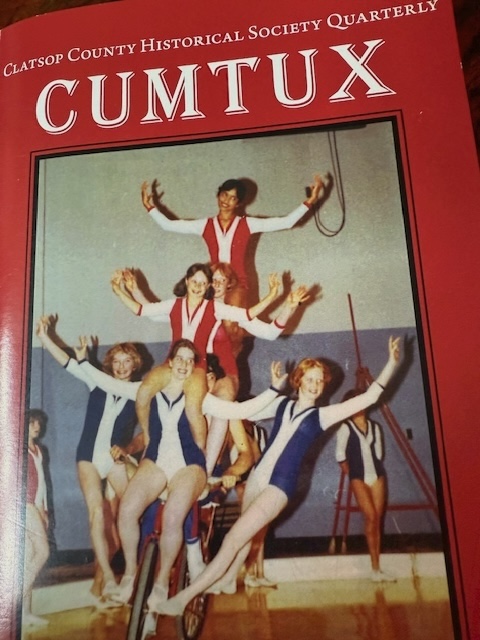Who are the people aboard Columbia River ships?
Published 12:15 am Friday, March 22, 2024

- Short turnaround times and strict precautions often keep officers and crews from coming ashore.
Each day on the Columbia River, curious residents and visitors see ships from around the world passing by.
Trending
These silent behemoths glide along the river corridor, making the journey from the Columbia River Bar, at the mouth of the river, to various upriver ports.
In practical terms, these guests fuel a multibillion-dollar economic engine in the Pacific Northwest.
The Columbia River Steamship Operators Association is an industry trade group based in Portland that represents maritime interests and ports in the region. According to their records, the Columbia River trade corridor supports 56 million tons of foreign trade, worth over $21 billion annually.
Trending
The Columbia River is the nation’s No. 1 wheat export gateway, and second in corn and soybean exports. It’s the third-largest grain export region in the world and leads the West Coast in bulk cargoes, wood exports and auto imports and exports. That’s a lot of cargo coming and going.
Add to that the influx of containerships that Portland welcomed during the coronavirus pandemic, and river trade now includes a good percentage of our “90% of everything.”
That includes food, clothing, furnishings and other products bought in stores and ordered from vendors — things we count on in our lives. If you look around your home, your car or your workplace, you’d be hard-pressed to find something that did not arrive by ship, either as a finished product or as raw materials.
But despite the vital economic nature of shipping, that’s not what’s on most people’s minds when they see a ship go by.
In the 20 years that I’ve been doing the Ship Report, a podcast and radio show that airs weekday mornings on KMUN in Astoria, by far the most common questions I have heard over the years are about the ships themselves and the people on them. People want to know: where are ships coming from, where are they going and who’s on board?
Inbound and outbound
On the Columbia, ships head inbound on the river from the ocean to either anchor in designated anchorage areas or dock at berths in a variety of ports.
Most are coming in to pick up cargo — the Columbia is a heavy export region.
The most commonly seen ship is the bulk carrier. Such ships have discrete cargo holds (gigantic open bins below decks) that allow them to take on what are called bulk cargoes.
Ships arrive here to pick up agricultural cargoes like corn, soy and wheat for export. Other bulkers pick up dry mineral cargoes like soda ash, copper concentrate and bentonite clay. Most ships enter the river without cargo inbound and leave loaded outbound.
Other ships come here bearing cargo to deliver: car carriers with brand new vehicles, container ships with a variety of goods and some bulk carriers bringing cargoes like steel, cement and gypsum.
Where are they from?
Many of the ships we see arrive from Asia. China sends many vessels here, like containerships to deliver manufactured goods and bulk carriers to pick up raw materials.
Often vessels arrive from Japan and South Korea, some delivering vehicles and others picking up cargoes like wheat. We also see a complement of vessels arriving from other regions, some transiting from the Atlantic Ocean to the Pacific Ocean through the Panama Canal.
Some ships come here directly from ports in Asia. Others make a run along the West Coast, delivering some of their cargo to places like Portland, Seattle and Vancouver, British Columbia.
Others continue south to ports in San Francisco and Los Angeles. Ships tend to return to where they started once they’ve delivered all their cargo, or have loaded a cargo to take back. They’re like semitrucks of the sea, but much larger and more efficient.
The Columbia also sees a regular complement of domestic vessels delivering refined petroleum products like gasoline, jet fuel and biodiesel.
Ship registration and flags
Most ships calling here are foreign-flagged, which means that they are registered in, and flying the flag of, a country other than the United States.
Ships are mostly registered under what are called “flags of convenience,” like Panama, Liberia or the Marshall Islands. These flag states, whose names you see along with the ship’s name on the stern, or rear area, of a passing ship, may have little to do with where the ship operates, its owners or where they live.
It’s an inexpensive way to register the ship with less stringent regulations than might apply were it to be registered in the home country of the ship owners.
Other ships are registered in their countries of origin, like Norway, Denmark and others. But regardless of what country’s name is on the stern of the ship, that may bear little relevance to where the officers and crew on board are from.
‘All over the world’
According to Kate Mickelson, the executive director of the Columbia River Steamship Operators Association, many crews on arriving ships are citizens of the Philippines.
Ships also have crews from Russia, Ukraine, India, Japan, China and other nations — and while it might make sense that a given ship would have people all from the same country on board, that’s not always the case.
“It can be both or either. It’s not uncommon to have the crew and officers from two different nationalities,” Mickelson said.
On U.S.-flagged domestic ships, the crews are American citizens or permanent residents. That’s a requirement by law under the Jones Act, a ruling designed to protect the U.S. merchant fleet.
Jones Act vessels are built and registered in the U.S. and manned by U.S. crews, and they alone are allowed to take cargo solely between domestic ports.
Christi Lee Dunham is a vessel agent working on the Columbia River with ships arriving daily from overseas.
Vessel agents are essential maritime professionals who act as liaisons between arriving ships and all the resources they need to interact with when they are on the river and engaging in business at a port.
She enjoys working with the masters of each vessel in her capacity as a vessel agent and said meeting officers and crew is one of the best parts of her job.
“The human beings that are on board these ships are from all over the world,” Dunham said.
She enjoys the cultural differences she encounters in her work.
“Sometimes, depending on where they’re from, there’s more formality. The crew will be in full uniform with epaulets on their sleeves. Other vessels are more relaxed. I really like that diversity. It’s interesting to see the different cultures from a maritime aspect,” she said.
Quick turnaround
Sometimes, Dunham is offered the opportunity to have a meal on board, which is a real treat. And many of the ships are regulars. “I’ve come to know some of the different captains. It’s a friendly face for them, to see someone they know after being at sea for 14 or 15 days,” she said.
Quick turnaround times in port nowadays mean that officers and crews don’t get the opportunity to go ashore often, even if they do have the required visas and customs clearance to disembark. Dunham said most just want to go shopping.
“They want to get an iPhone, or they want to buy some Nike tennis shoes. They’re just like anybody else,” she said. “They just want to have that opportunity to go out and buy American things. Just like if we go abroad somewhere, we want to be tourists as well.”
Dunham said the pandemic changed things quite a bit.
“Some of the countries still have very strict guidelines on their end,” she said. Some employers want crews to stay on board to avoid exposure, although that has eased in recent months.
Mostly what stops crews from leaving the ship are the short turnaround times in port. “It’s amazing to me how quickly … they’ll spend eight hours transiting up the river, discharge (their cargo) and then turn around and head back out,” Dunham said.
As a result, many ships are here for 24 to 48 hours, and that’s after 14 days or more at sea.
“Sometimes I really feel for the crews, because it’s really hard work,” she said. “Many of them are on a contract for three to four months away from their families. It’s a huge commitment.”
Pizza and doughnuts
On a recent ship, Dunham coordinated things so the crew could get 14 pizzas.
“They really wanted pizza, and I said, ‘I can get you pizza,’” Dunham said, smiling. “They wanted good pizza, so I got them really good, custom pizza. They were so thrilled.”
Portland-based Voodoo Doughnut was a crew-pleaser on another ship.
“They googled this phenomenon of doughnuts here for our area, you know, just like a tourist. And they’ll say, ‘Can you get us this doughnut?’ And I say, sure, if I can, I will. I try to make it happen because I know they have so little time, and it’s such a challenging thing being at sea for so long.”
Dunham said some crew resources at ports have not reopened since the pandemic, and so options for transportation to get seafarers to places like a local mall aren’t currently available.
“They are limited right now in terms of what they can do to get off a ship,” she said.
Each ship that passes Astoria’s downtown waterfront has between 20 and 30 crew members on board, including the master (captain) and other officers. Typically, most are working employment contracts that keep them on board for months at a time, a long stretch to be away from home.
For these career mariners, a little hospitality — and sometimes pizza and doughnuts — from kind agents like Dunham make the long trips and separation from loved ones a little more bearable.









